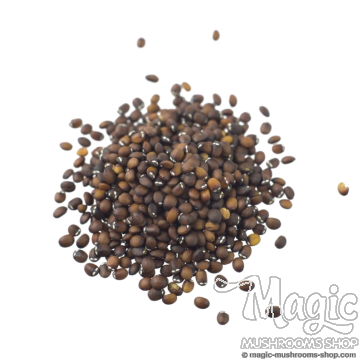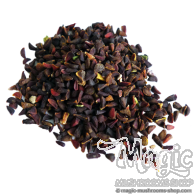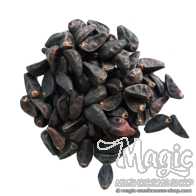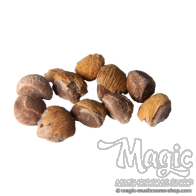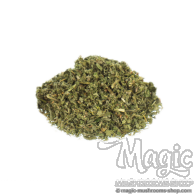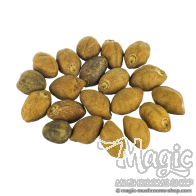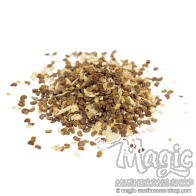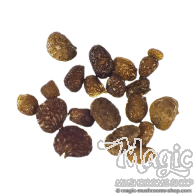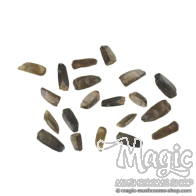Catmint Seeds | Nepeta Cataria - Seeds of the Gods
Disponibilidade: Disponível
Contents
Contains 1 gram / approx. 1700 seeds In hermetically sealed packaging.
Effects of Catmint
Catmint (Nepeta Cataria) is perhaps more known for what it does for cats than for what it does for humans.
Cats love Catmint: as soon as they near the plant, they start rolling around euphorically, rubbing the plant with their heads and eagerly chewing its leaves. Catmint’s active compound nepetalactone drives cats to utter ecstacy.
Catmint’s effects on humans aren’t quite as intense, but nonetheless very comforting when used as a tea. Catmint calms the nervous system and helps you to relax.
Moreover, you can use it to treat all kinds of everyday complaints, such as cramps, stomach aches, nervous tension and bad digestion.
According to some, high doses of Catmint could trigger hallucinations.
In French cuisine, Catmint is used as a condiment alongside herbs like sage, thyme, rosemary and bay leaves.
Use of Catmint
Catmint is generally used to brew tea, but some people also choose to smoke it. To brew Catmint tea:
- Use two table spoons or 25 grams of Catmint on one liter of hot water.
- Boil the Catmint in the water for a short while and let it sit for about 15 minutes.
- Add honey to taste.
Cultivating Catmint
Catmint is easy to cultivate and not very picky about the soil in which it will grow. It’s best to start cultivation inside the house, because the seeds take a while to germinate. As soon as the seeds have sprouted and grown into seedlings, you can place the Catmint plants into your garden. This is preferably done in spring, to avoid frost killing the seedlings. Catmint likes lots of sunlight and prefers to keep its feet dry. As soon as it’s fully grown, Catmint will survive winter, so you can leave the plants in your garden after autumn. However, Catmint has a tendency to overgrow other plants, so be mindful when placing it in your garden!
History of Catmint
Catmint is part of the lamiacae or mint family, just like mint, thyme and rosemary. Originally, Catmint was found in Southern and Eastern Europe, the Middle East, Central Asia and China, but by now it’s also become naturalized in North America.
Catmint has been used for hundreds of years as a herbal medicine to treat fever, stomach aches, headaches, rheumatism, insomnia, menstruation pains and even hysteria. It’s still a common ingredient in many homeopathic medicaments.
In Europe, Catmint is a popular ornamental plant for many gardeners, because besides cats, it tends to attract lots of bees and butterflies.
.
| SKU | su-es-1 |
|---|---|
| Weight (KG) | 0.0200 |
| Porções | 5 - 40 |
| Conteúdo | 1g |
| Origem | n / d |
| Species | Não |
Apenas utilizadores registados podem escrever comentários. Por Favor, Faça login o criar uma conta.


